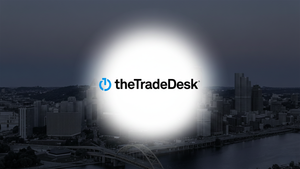Expects Revenues from High-Growth Technologies to Approximately Double
TD SYNNEX (NYSE: SNX), a leading global distributor and solutions aggregator for the IT ecosystem, today hosted its 2022 Investor Day during which it provided further details regarding its fiscal 2022 financial outlook and introduced its medium-term financial targets.
“Through the merger of two great companies to form TD SYNNEX, we believe we are uniquely positioned and qualified to transform our industry and provide unmatched capabilities to our partners, customers, shareholders and co-workers,” said Marshall Witt, CFO. “We have an attractive core business, which when combined with above-average growth rates in technology areas such as Cloud, Data & Analytics, AI, IoT and Hyperscale Infrastructure provide us with the ability to further improve our operating margins, and generate robust cash flow and enhanced shareholder returns over the medium-term.”
Fiscal 2022 Financial Targets(1)
For Fiscal 2022, the company provided the following financial targets:
- Adjusted net revenue growth of 6-8%
- Non-GAAP operating margin of 2.5-2.7%
- Adjusted ROIC of 11%
- Total debt leverage of 2.5 times and net debt leverage of 1.6 times
Medium-Term Financial Targets(1)
Over the medium-term, which is defined as the next three to four years, the company provided the following financial targets:
- Revenue growth of 6-7% at a compounded annual growth rate
- Revenues and non-GAAP operating margins from high-growth technologies to approximately double
- Non-GAAP operating margin of approximately 3%
- Adjusted ROIC of 300 basis points above the company’s weighted average cost of capital
- Total shareholder returns of 15-20%
- Free cash flow of nearly $1.5 billion
- 2% dividend yield
Investor Day Presentations
The Investor Day presentations were webcast, and an archived replay will be available shortly from the Investor Relations website, ir.synnex.com, where the accompanying presentation slides may also be accessed.
About TD SYNNEX
TD SYNNEX (NYSE: SNX) is a leading global distributor and solutions aggregator for the IT ecosystem. We’re an innovative partner helping more than 150,000 customers in 100+ countries to maximize the value of technology investments, demonstrate business outcomes and unlock growth opportunities. Headquartered in Clearwater, Florida, and Fremont, California, TD SYNNEX’ 22,000 co-workers are dedicated to uniting compelling IT products, services and solutions from 1,500+ best-in-class technology vendors. Our edge-to-cloud portfolio is anchored in some of the highest-growth technology segments including cloud, cybersecurity, big data/analytics, IoT, mobility and everything as a service. TD SYNNEX is committed to serving customers and communities, and we believe we can have a positive impact on our people and our planet, intentionally acting as a respected corporate citizen. We aspire to be a diverse and inclusive employer of choice for talent across the IT ecosystem. For more information, visit www.TDSYNNEX.com or follow us on Twitter, LinkedIn, Facebook and Instagram.
(1)Use of Non-GAAP Financial Information
In addition to the financial results presented in accordance with GAAP, TD SYNNEX also uses adjusted selling, general and administrative expenses, non-GAAP operating income, non-GAAP operating margin, non-GAAP net income, and non-GAAP diluted earnings per share, which are non-GAAP financial measures that exclude acquisition, integration and restructuring costs, the amortization of intangible assets, share-based compensation expense, purchase accounting adjustments and the related tax effects thereon. The Company also uses adjusted earnings before interest, taxes, depreciation and amortization (“Adjusted EBITDA”) which excludes other income (expense), net, acquisition, integration and restructuring costs, share-based compensation expense and purchase accounting adjustments. In prior periods, TD SYNNEX has excluded other items relevant to those periods for purposes of its non-GAAP financial measures.
Acquisition, integration and restructuring costs typically consist of acquisition, integration, restructuring and divestiture related costs and are expensed as incurred. These expenses primarily represent professional services costs for legal, banking, consulting and advisory services, severance and other personnel related costs, share-based compensation expense and debt extinguishment fees. From time to time, this category may also include transaction-related gains/losses on divestitures/spin-off of businesses, costs related to long-lived assets including impairment charges and accelerated depreciation and amortization expense due to changes in asset useful lives, as well as various other costs associated with the acquisition or divestiture.
TD SYNNEX’ acquisition activities have resulted in the recognition of finite-lived intangible assets which consist primarily of customer relationships and lists and vendor lists. Finite-lived intangible assets are amortized over their estimated useful lives and are tested for impairment when events indicate that the carrying value may not be recoverable. The amortization of intangible assets is reflected in the Company’s Statements of Operations. Although intangible assets contribute to the Company’s revenue generation, the amortization of intangible assets does not directly relate to the sale of the Company’s products. Additionally, intangible asset amortization expense typically fluctuates based on the size and timing of the Company’s acquisition activity. Accordingly, the Company believes excluding the amortization of intangible assets, along with the other non-GAAP adjustments, which neither relate to the ordinary course of the Company’s business nor reflect the Company’s underlying business performance, enhances the Company’s and investors’ ability to compare the Company’s past financial performance with its current performance and to analyze underlying business performance and trends. Intangible asset amortization excluded from the related non-GAAP financial measure represents the entire amount recorded within the Company’s GAAP financial statements, and the revenue generated by the associated intangible assets has not been excluded from the related non-GAAP financial measure. Intangible asset amortization is excluded from the related non-GAAP financial measure because the amortization, unlike the related revenue, is not affected by operations of any particular period unless an intangible asset becomes impaired or the estimated useful life of an intangible asset is revised.
Share-based compensation expense is a non-cash expense arising from the grant of equity awards to employees based on the estimated fair value of those awards. Although share-based compensation is an important aspect of the compensation of our employees, the fair value of the share-based awards may bear little resemblance to the actual value realized upon the vesting or future exercise of the related share-based awards and the expense can vary significantly between periods as a result of the timing of grants of new stock-based awards, including grants in connection with acquisitions. Given the variety and timing of awards and the subjective assumptions that are necessary when calculating share-based compensation expense, TD SYNNEX believes this additional information allows investors to make additional comparisons between our operating results from period to period.
Purchase accounting adjustments are primarily related to the impact of recognizing the acquired vendor and customer liabilities related to the merger with Tech Data at fair value. The Company expects the duration of these adjustments to benefit our non-GAAP operating income through fiscal 2022 and through a portion of fiscal 2023 based on historical settlement patterns with our vendors and in accordance with the timing defined in our policy for releasing vendor and customer liabilities we deem remote to be paid.
Trailing fiscal four quarters ROIC is defined as the last four quarters’ tax effected operating income divided by the average of the last five quarterly balances of borrowings and equity, net of cash. Adjusted ROIC is calculated by excluding the tax effected impact of non-GAAP adjustments from operating income and by excluding the cumulative tax effected impact of current and prior period non-GAAP adjustments on equity.
TD SYNNEX also uses free cash flow, which is cash flow from operating activities, reduced by purchases of property and equipment. TD SYNNEX uses free cash flow to conduct and evaluate its business because, although it is similar to cash flow from operations, TD SYNNEX believes it is an additional useful measure of cash flows since purchases of property and equipment are a necessary component of ongoing operations. Free cash flow reflects an additional way of viewing TD SYNNEX’ liquidity that, when viewed with its GAAP results, provides a more complete understanding of factors and trends affecting its cash flows. Free cash flow has limitations as it does not represent the residual cash flow available for discretionary expenditures. For example, free cash flow does not incorporate payments for business acquisitions. Therefore, TD SYNNEX believes it is important to view free cash flow as a complement to its entire Consolidated Statements of Cash Flows.
TD SYNNEX management uses non-GAAP financial measures internally to understand, manage and evaluate the business, to establish operational goals, and in some cases for measuring performance for compensation purposes. These non-GAAP measures are intended to provide investors with an understanding of TD SYNNEX’ operational results and trends that more readily enable investors to analyze TD SYNNEX’ base financial and operating performance and to facilitate period-to-period comparisons and analysis of operational trends, as well as for planning and forecasting in future periods. Management believes these non-GAAP financial measures are useful to investors in allowing for greater transparency with respect to supplemental information used by management in its financial and operational decision-making. As these non-GAAP financial measures are not calculated in accordance with GAAP, they may not necessarily be comparable to similarly titled measures employed by other companies. These non-GAAP financial measures should not be considered in isolation or as a substitute for the comparable GAAP measures, and should be read only in conjunction with TD SYNNEX’ Consolidated Financial Statements prepared in accordance with GAAP. A reconciliation of TD SYNNEX’ GAAP to non-GAAP financial information is set forth in the supplemental tables at the end of this press release.
The Company has not provided a reconciliation of its FY22 and medium – term adjusted return on invested capital and medium-term adjusted operating margin outlook to an expected return on invested capital and operating margin outlook because certain items that are a component of return on invested capital and operating margin cannot be reasonably projected. In particular, sufficient information is not available to calculate certain adjustments required for such reconciliations, including Acquisition, integration and restructuring costs, Amortization of intangibles, Share-based compensation and invested capital comprising of equity and borrowings. These components of return on invested capital and operating margin could significantly impact Company's actual return on invested capital and operating margin.
Safe Harbor Statement
Statements in this news release that are "forward-looking statements" within the meaning of Section 27A of the Securities Act of 1933 and Section 21E of the Securities Exchange Act of 1934 involve known and unknown risks and uncertainties which may cause the Company's actual results in future periods to be materially different from any future performance that may be suggested in this release. The Company assumes no obligation to update any forward-looking statements contained in this release.
These forward-looking statements may be identified by terms such as believe, foresee, expect, may, will, provide, could and should and the negative of these terms or other similar expressions. These forward-looking statements include, but are not limited to, statements regarding shareholder returns, revenue growth, our expectations and outlook for fiscal 2022 as to revenue, non-GAAP operating margin, adjusted ROIC and total debt leverage and our outlook for the next three to four years, including revenue growth, gross revenues, non-GAAP operating margin, shareholder returns and free cash flow.
The forward-looking statements are subject to risks and uncertainties that could cause actual results to differ materially from those discussed in the forward-looking statements. These risks and uncertainties include, but are not limited to: the risk that the legacy SYNNEX and legacy Tech Data businesses will not be integrated successfully or realize the anticipated benefits of the combined company; new or ongoing effects of the COVID-19 pandemic; the unfavorable outcome of any legal proceedings that have been or may be instituted against us; the ability to retain key personnel; general economic conditions and any weakness in information technology and consumer electronics spending; seasonality; the loss or consolidation of one or more of our significant original equipment manufacturer, or OEM, suppliers or customers; market acceptance and product life of the products we assemble and distribute; competitive conditions in our industry and their impact on our margins; pricing, margin and other terms with our OEM suppliers; our ability to gain market share; variations in supplier-sponsored programs; changes in our costs and operating expenses; changes in foreign currency exchange rates; changes in tax laws; risks associated with our international operations; uncertainties and variability in demand by our reseller and integration customers; supply shortages or delays; any termination or reduction in our floor plan financing arrangements; credit exposure to our reseller customers and negative trends in their businesses; any future incidents of theft; the declaration, timing and payment of dividends, and the Board’s reassessment thereof; and other risks and uncertainties detailed in our Form 10-K for the fiscal year ended November 30, 2021 and subsequent SEC filings. Statements included in this press release are based upon information known to TD SYNNEX as of the date of this release, and TD SYNNEX assumes no obligation to update information contained in this press release unless otherwise required by law.
Copyright 2022 TD SYNNEX Corporation. All rights reserved. TD SYNNEX, the TD SYNNEX Logo, and all other TD SYNNEX company, product and services names and slogans are trademarks of TD SYNNEX Corporation. Other names and trademarks are the property of their respective owners.
Forecast |
||||||
|
Fiscal Year Ended November 30, 2022 |
|||||
(Amounts in millions, except per share amounts) |
Low |
High |
||||
Revenue |
$ |
62,100 |
$ |
63,000 |
||
Adjustments |
|
|
||||
Foreign Currency Exchange Impact(1) |
|
1,200 |
|
1,200 |
||
Accounting Policy Alignment(2) |
|
1,100 |
|
1,100 |
||
Adj. Revenue |
$ |
64,400 |
$ |
65,300 |
||
Adj. Y/Y Revenue Growth |
|
6% |
|
8% |
||
Forecast |
||||||
|
Fiscal Year Ended November 30, 2022 |
|||||
(Amounts in millions) |
Low |
High |
||||
Operating income |
$ |
806 |
$ |
1,013 |
||
Acquisition, integration and restructuring costs |
|
267 |
|
227 |
||
Amortization of intangibles |
|
330 |
|
310 |
||
Share-based compensation |
|
41 |
|
39 |
||
Purchase accounting adjustments |
|
120 |
|
100 |
||
Non-GAAP operating income |
|
1,564 |
|
1,689 |
||
Non-GAAP operating income margin(1) |
|
2.50% |
|
2.70% |
||
View source version on businesswire.com: https://www.businesswire.com/news/home/20220329005666/en/
Contacts
Liz Morali
Investor Relations
510-668-8436
ir@synnex.com
Bobby Eagle
Global Corporate Communications
727-538-5864
bobby.eagle@techdata.com





